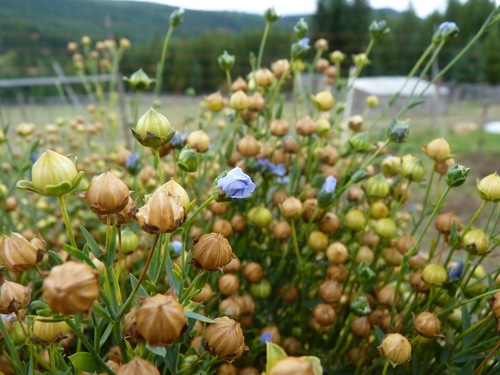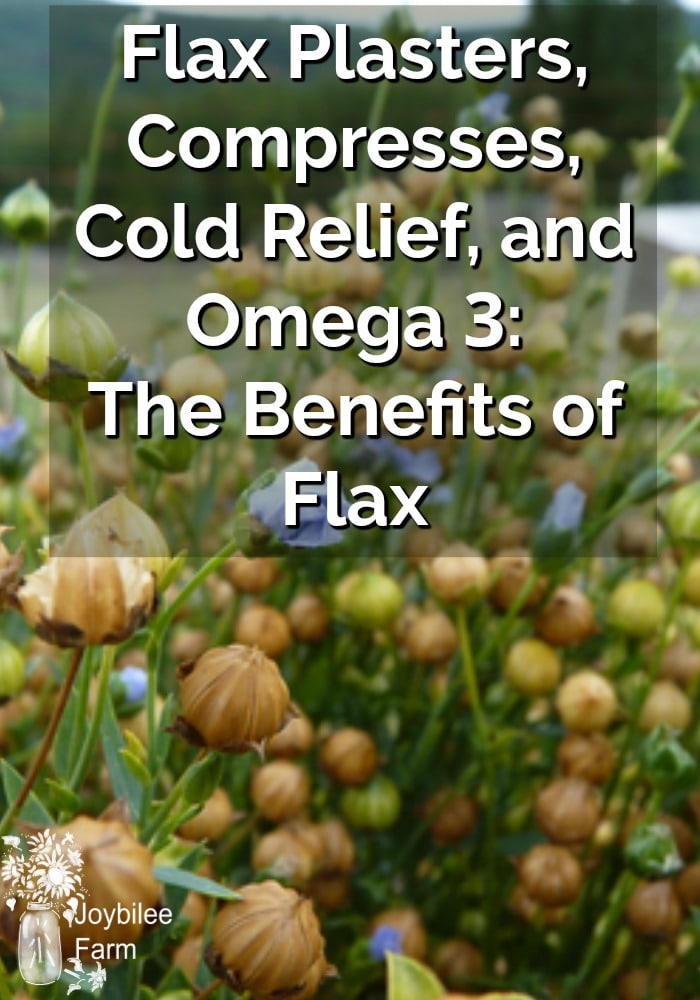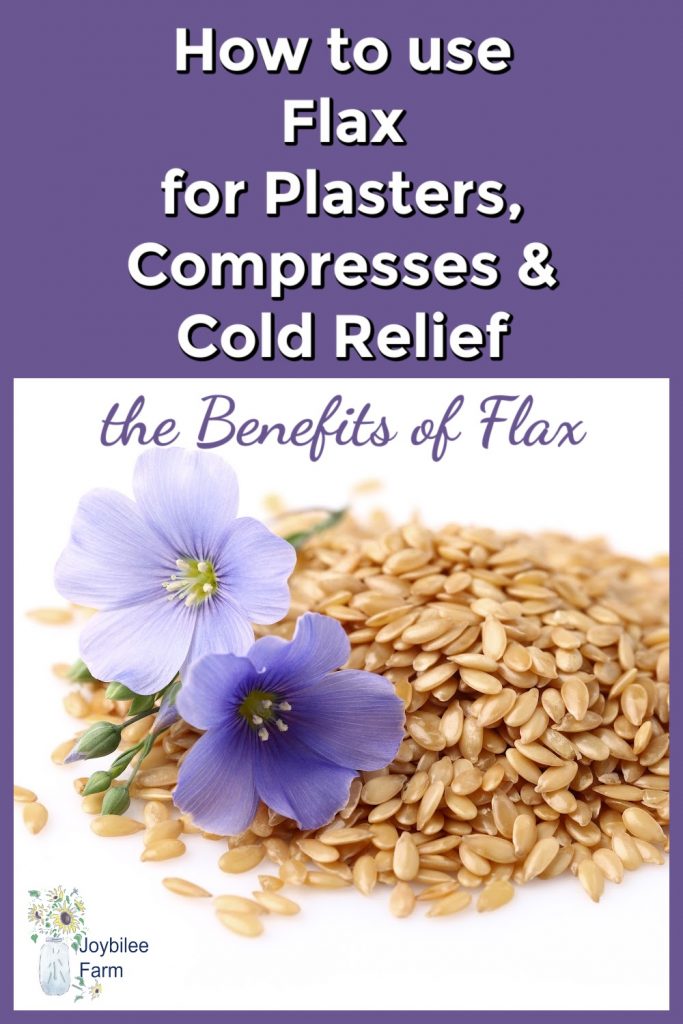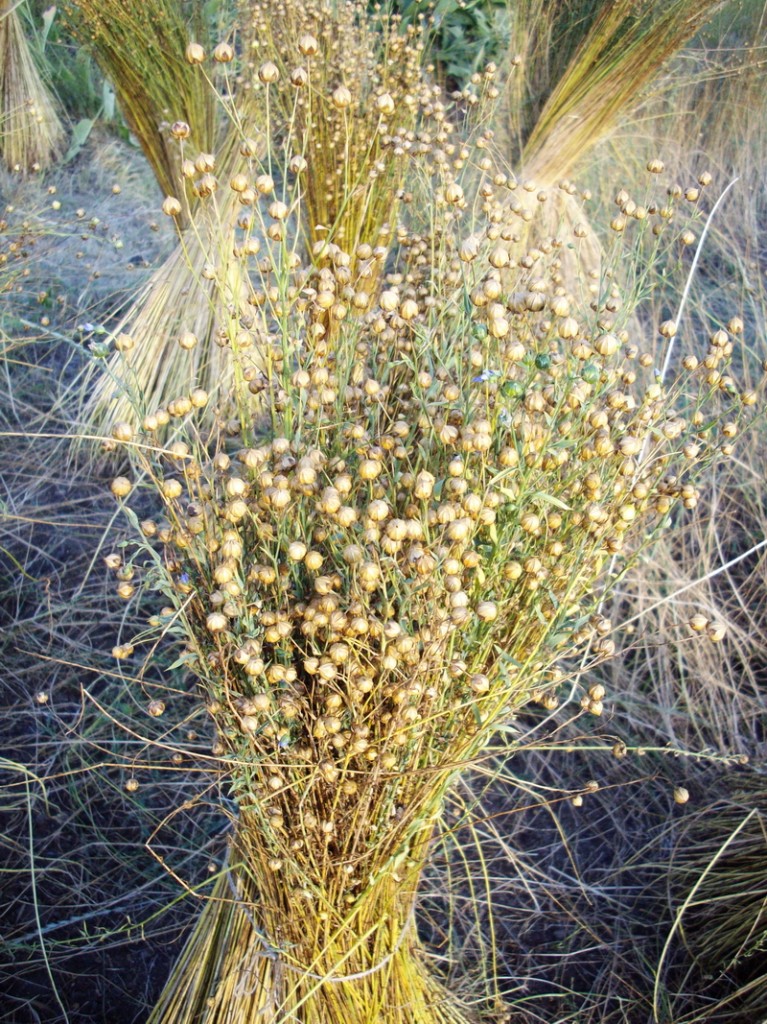Flax seed is a kitchen staple in many homes but it also has beneficial properties. Rich in omega 3 fatty acids, flax is a common dietary supplement. It is rich in oils and fiber and useful to relieve pain and inflammation.
Flax is one of the oldest cultivated plants in the world. Like most agricultural plants, it originated in the Middle East and travelled around the world with human migration. The book: “The Essential Flax, a compendium of diet reference information, facts, folklore, recipes, and research” says of flax:
The heroine of our story has a history that is veiled in the mists of time and a future that is following a rising star. She has graced royalty, anointed the holy and has always been humbled to serve the poor. She has traveled the world and has settled throughout Europe, Asia, Africa, and in both North and South America. She has been the subject of ancient hieroglyphics and pictographs and now we examine her at the cellular level using the most advanced technology. Her praises have been sung in poetry, her story told in fable, and today she is the subject of sophisticated scientific and medical journals. She has been studied by herbalists and now sees her name in the modern pharmacopoeia asserted as the quintessential functional food. She is proclaimed, not only as one of the foundation crops of humankind but also as the “bio-economy crop” of the 21st century.

From the flax plant, we get linen fiber, flax seed, and flax oil for food, linseed oil for wood finishing, linoleum for flooring, flax jelly to cure colds, plus flax waste for mulch, and to reinforce particleboard. Flax is being used not just in clothing, but in car parts, fibreglass, and plastics. It is also used in paper money and in artist’s canvases. Flax thread is the original rope, used in the fishing industry and the navy because it is stronger when wet. The sails of ships and Viking vessels were made of linen, again because it is stronger when wet.
In ancient Egypt flax was revered. Legend says it was the first thing the gods created for themselves. – Linda Heinrich Magic of Linen
Flax is soothing to irritated skin and mucus membranes, emollient, purgative, laxative, and vermifuge. – The Essential Flax.
It was so important during Medieval times that the fields of flax were protected. And monks compiled compendiums of the medicinal benefits of flax in monastery libraries. We continue to rely on this information today.

Flax seed benefits
Flax seed is a good source of Omega 3 fatty acids, calcium, magnesium, and phosphorous, as well as niacin, folic acid, and vitamin E. 24% of the oil in flax seed is Omega 3. It is also a good source of protein and dietary fiber. Because of this Health Canada recommends that 2 tbsp. of ground flaxseed (1 ounce) be added to your food daily.
It is best to store flax seed as a whole seed. Flax, being rich in liquid oils, goes rancid quickly once it is ground. In its whole form, it is protected from rancidity. I buy a 20 kg. bag every fall, when the flax harvest comes in and store it in a metal can, in my cold room. Once a week I put a quart of flax seed through my Vitamix blender to grind it. Then store this in a glass jar with a lid in the fridge. I add this to granola, oatmeal, bread dough to give my family the added Omega 3 fats that flax contributes.
In Flanders ashes (collected on Ash Wednesday) from burned branches and occasionally old liturgical linens were mixed and scattered with the seed to impart favorable blessings upon the flax. — Linda Heinrich
Old-time flax hand lotion (adapted from The Essential Flax)
1/4 c. whole flax seed
4 c. filtered water
2 tbsp. glycerin
1/2 tsp. natural vitamin E
5 drops lavender, lemon verbena, or rose essential oil
Boil flax seed in water for 2 hours until it thickens. Strain out the flax seed retaining the water. Add glycerine, and vitamin E. Allow to cool. Stir in essential oil. Mix well. Store in light proof jar in the refrigerator. Yield: 1 to 1 1/2 cups.
Use like regular hand lotion. It has a different, jelly like consistency. It goes on a bit sticky but is absorbed quickly by your skin.
- One bushel of flax seed produces 9.5 litres of linseed oil.
- Bees collect close to 15 kg of honey from one hectare of flax.
Hot compress
Flax hot compress can be made by stitching flax seed into a rectangular square of cotton fabric. (Use 2 pieces of cotton 6 inches x 24 inches) Fill the pillow with flax seed and stitch closed. Heat in a microwave or in an oven. Flax relieves aches, pains, and sprains. It can be used hot or cold. These are quick to make and are great gifts to slip in a parcel.
- Flax has beneficial effects in breast cancer treatment, heart disease, liver disease, diabetes, celiac disease, and high blood pressure.
How to make a flax plaster
Flax seed plasters were used traditionally to ease pain, improve circulation, and hasten the expression of infection. Used in the treatment of boils, aching muscles, inflamed tissues, carbuncles, ulcerations, and inflammation, they are easy to make.
Boil 1/2 cup of water and 1/4 cup of whole flax seed, stirring constantly until thickened, about 10 minutes. Dump the flax seed into the center of a clean cotton handkerchief. Fold the handkerchief over the flax to form an enclosed packet. Allow it to cool slightly until it will not burn the skin. Apply to the affected area as hot as can be tolerated without burning. Cover the plaster with a dry cloth. Leave in place for up to three hours. Remove before it is cooled completely. Do not reuse flax seed. Note: Remove immediately if skin becomes irritated. Do not use if a client has a flax allergy.
Flax seed in animal feed
Flax seed added to the diets of livestock and pets increases their omega 3 ratio, which is especially important if they are being fed other grains, which are generally higher in omega 6 fats. Poultry and ruminants can have flax seed added whole, as their digestion will break down the flax seed so that their bodies can utilize it to the full. Young animals, dogs, cats, and humans should have flax ground before eating, to help in the breakdown of the fibers. When flax is added to the diet of laying chickens, their eggs have an increase in Omega 3 fatty acids.
Flax seed, when added to the diet of dogs and cats, improves their coats, too, adding softness and gloss, and improves overall health.

More flax resources:
Flax jelly, for relief from colds and flu.
Hand sanitizer using flax seeds.





Yes that would be a flax plaster. It is supposed to be helpful.